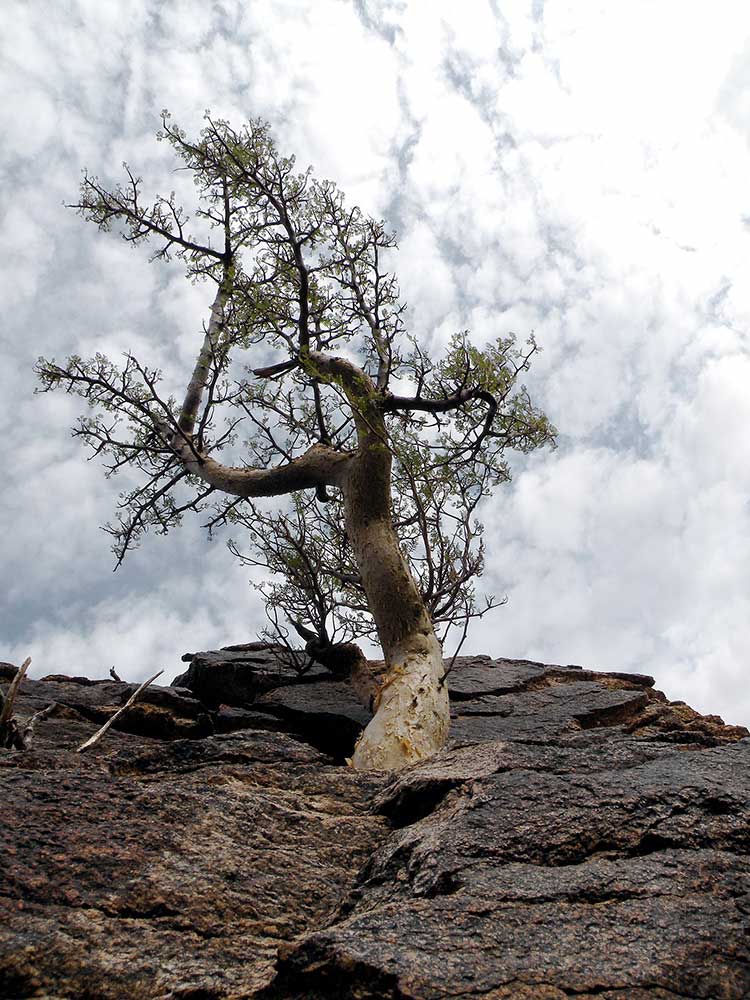Elephant Tree
Bursera microphylla

The elephant tree is the rare, northernmost species of small, aromatic, tropical family which is extremely susceptible to cold. Their short, very stout, tapered trunks and branches are reminiscent of an elephant's legs and trunks, hence their name. They have an open, but sparse crown, and grow to a height of only 10 feet.
The elephant tree's scientific name, Bursera microphylla, means "small-leafed." Dull, light-green, oblong leaves about an inch long, with a winged axis, are composed of tiny leaflets. The twigs are reddish-brown, and the bark is thin and flaky, white on the outside with lower layers green, then red.

Bursera microphylla growing on a granite boulder at South Mountain Municipal Park, Phoenix, Arizona. January 2010. (C. Cordova)
Ostimuri, CC BY-SA 3.0, via Wikimedia Commons
Range
Sonoran Desert of southwestern Arizona, extreme southern California and northwestern Mexico to 2,500 feet elevation. There is a very small population of these trees in Anza Borrego Desert State Park between the Vallecito Mountains and Ocotillo Wells.

Bursera microphylla in the Vizcaino Desert, Baja California Sur, Mexico
Toedrifter, Public domain, via Wikimedia Commons
Habitat
Rocky dry slopes of desert mountains
Flowers
Small, 5-petaled, creamy-white flowers, less than 1/4-inch wide, appear in the early summer.
Fruit
An aromatic, 1/4-inch-long red fruit appears in autumn. It has a curving, elliptic stalk and contains one nutlet.
Water Storage
Almost a succulent, this tree can store water in its trunk and limbs. The bark periodically peels and sheds.
Elephant trees are so rare that for many years, skeptics refused to acknowledge their existence. It wasn't until 1937 that this species was confirmed growing in the Anza-Borrego Desert Park region. In the 1980s, specimens were also discovered in the foothills of the Santa Rosa Mountains, 20 miles to the north. Native Americans considered medicines prepared from the elephant tree very valuable and powerful. The Cahuilla reportedly used the sap for skin treatments.
Share this page on Facebook:
The Desert Environment
The North American Deserts
Desert Geological Terms



